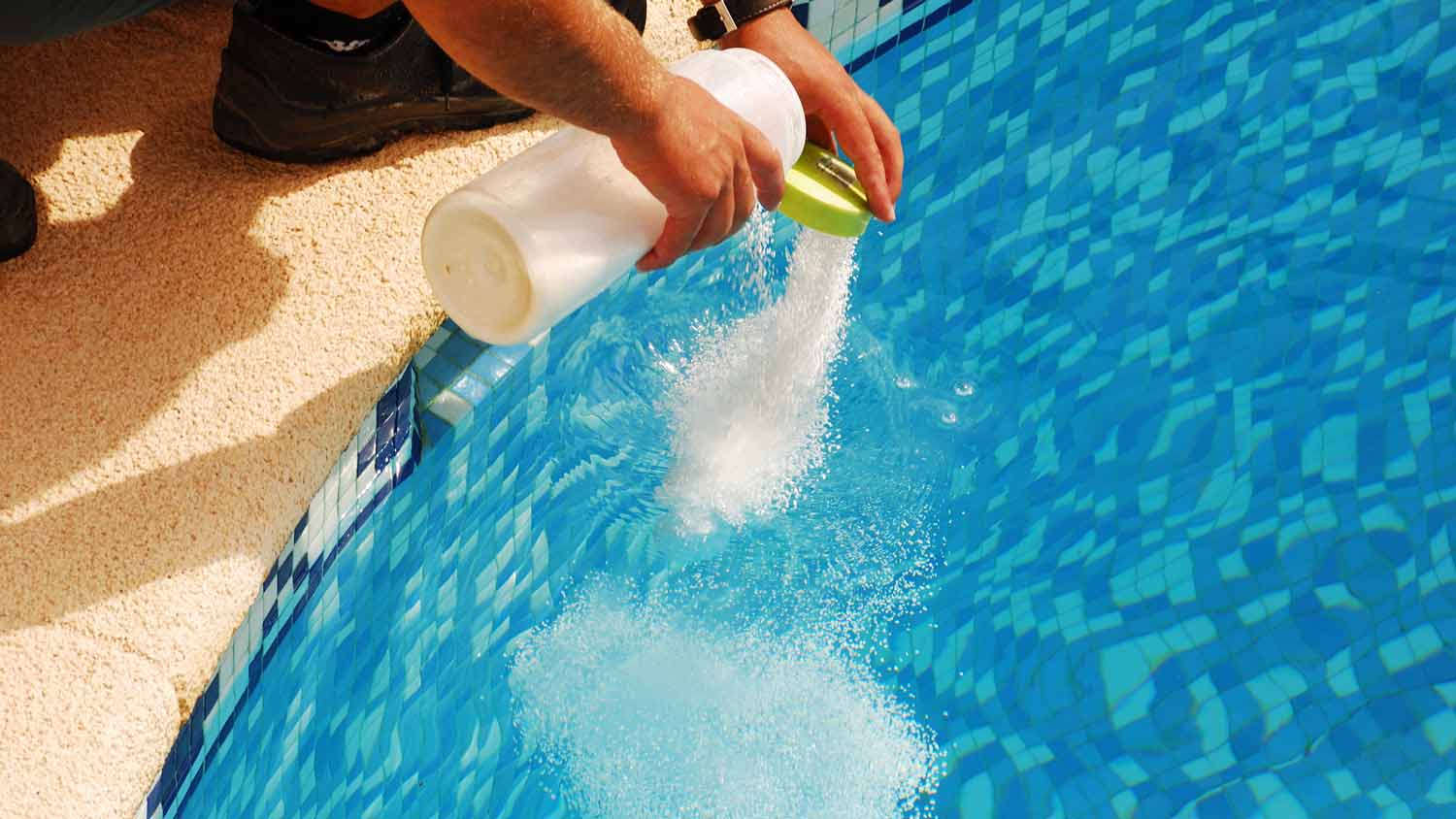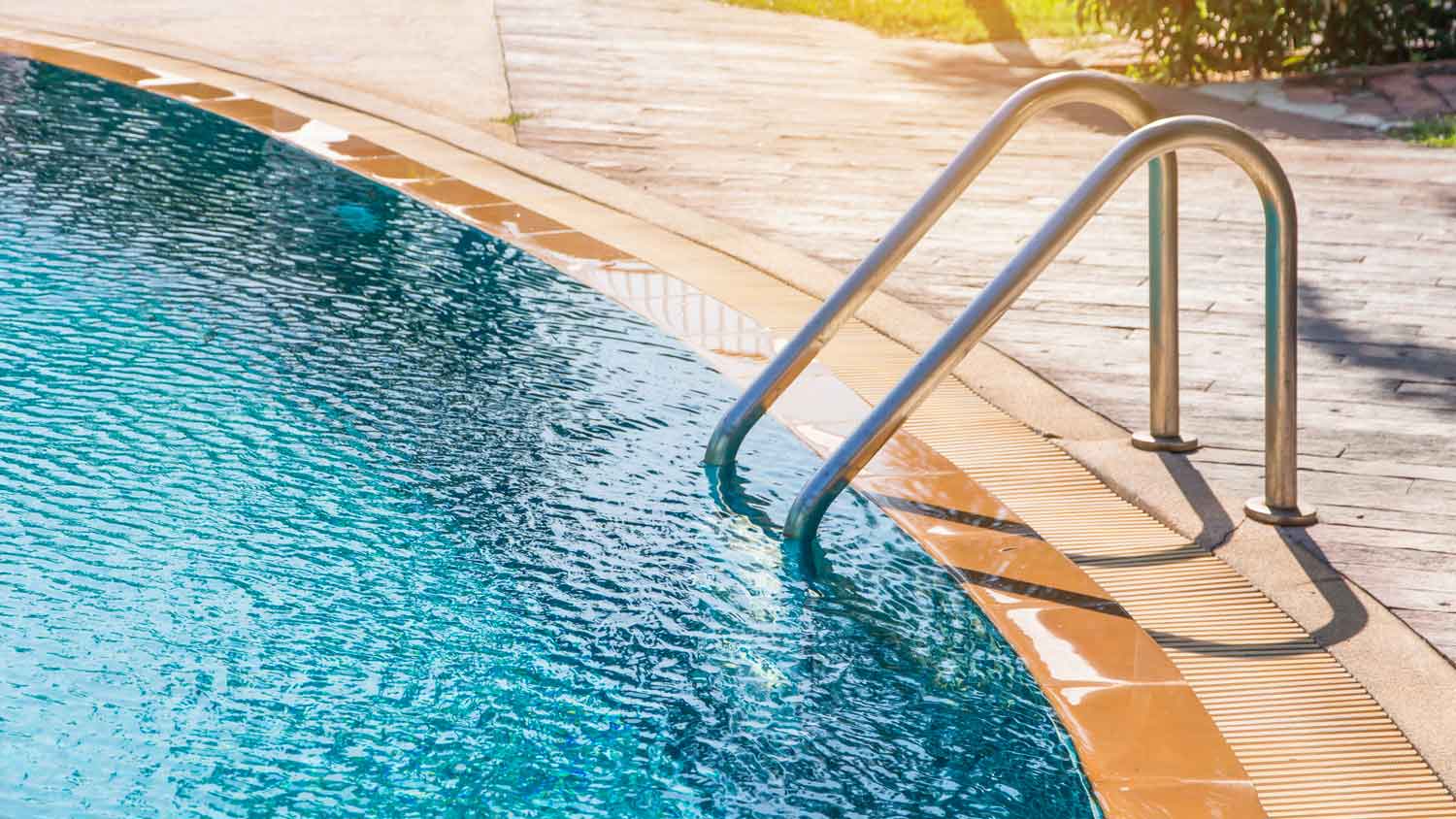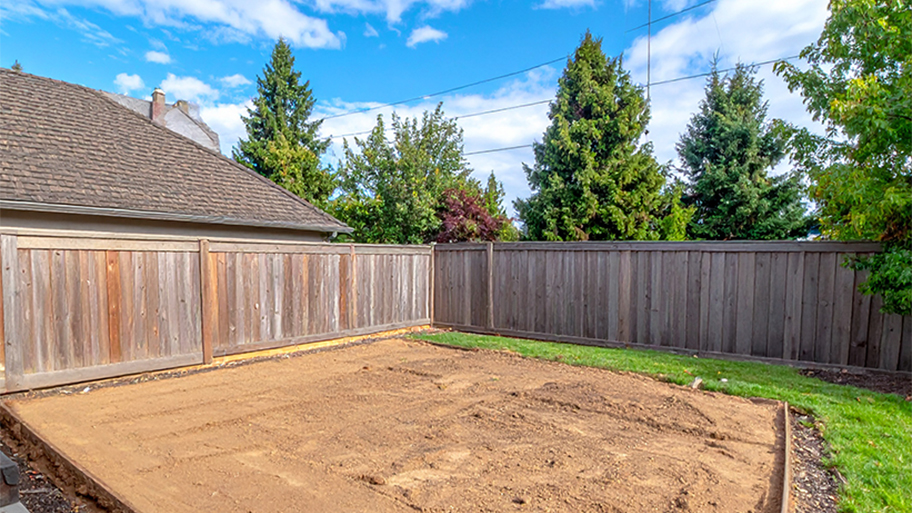
Pool tile costs can vary widely depending on the size of your pool and the type of tile. Here’s how much it costs to retile a pool and other projects to think about.
Don't let cloudy water storm all over your pool party


While you could save between $80 and $150 per month on the cost of professional pool maintenance, hiring an expert prevents common pool problems.
Pool maintenance is an ongoing task, and it takes experience to balance chlorine, pH, alkalinity, and hardness.
Pros have the necessary tools and skills to perform the various steps quickly, consistently, and safely.
A local pool service pro also provides routine vacuuming, cleaning, balancing, and filter management to free up your time and deliver consistently clear water.
Picture this: It's going to be a gorgeous day for a swim, but when you step outside, you're greeted with a pool that's cloudy, murky, and anything but welcoming. Knowing how to clear cloudy pool water can keep you from missing out on innertube time while prolonging the life of your entire pool's system. Let's walk through why your pool is cloudy and how to clear cloudy pool water fast so you can enjoy your next swim ASAP.
As a pool owner, you already know that balancing a pool's ecosystem is a delicate dance. You must pick the right pool cleaning chemicals, opt for the right mechanical filtering systems, and check off a weekly pool maintenance list. A cloudy pool is a sign that one of these items is out of whack.
The most common reasons pool water gets cloudy are:
Algae
Debris
Chlorine imbalance
PH imbalance
Water hardness
Filter issues

The moment your spot issues in your water clarity, break out your weekly testing kit. It is important to rule out issues with your pH, alkalinity, calcium, and chlorine levels. Remember, each category should fall between these numbers:
Chlorine: 1–3 ppm
PH: 7.2–7.6
Alkalinity: 80–150 ppm
Calcium hardness: 180–222 ppm
We also recommend purchasing a kit that reads levels of both combined and free chlorine. Free chlorine indicates how much of the chemical has yet to react with contaminants.
Each of these numbers can help you determine which cloudy pool water fixes to start with below and which to rule out. If you're concerned major issues are brewing in your pool, call in a professional to schedule a pool inspection.
Keep in mind that these numbers do not apply to natural swimming pools, which rely on more complex plant regeneration zones without chemicals. Natural pools are rarely the same clear color as treated pools.
Keep in mind that your pool is a constantly changing ecosystem. When one factor tips the scales, others will tip with it. High pH, for example, can lead to algae growth. And low chlorine levels will raise the pH. So while it can be helpful to investigate the individual reasons why your pool is cloudy, remember that they often work hand-in-hand.
That being said, here are the eight best methods for how to clear cloudy pool water fast.
Algae can find its way into your pool through the air, from rainwater, and even off your favorite pool noodle. Significant shifts in the temperature, pH, circulation, or chlorine in the pool can all lead algae to bloom to turn your water a cloudy shade of green, yellow, or even black.
Here's how to remove algae from a pool:
Identify the type of algae by its color—green, yellow (for mustard algae), or black.
Test your pool's chemicals, alkalinity, and pH with a standard kit.
If the levels of free chlorine are low, shock your pool and wait 24 hours or the length noted on the instructions.
Use a pool brush and scrubbers to clean the sides, floor, and steps of the pool. If you're dealing with black algae, you may need a hard-bristled brush to break up the top layer.
Purchase and apply an algaecide specific to the type of algae in your pool.
Circulate and filter the algae for the time specified on the instructions—usually another 24 hours—and manually reclean the surfaces if necessary.
Quick important note: If your pool is cloudy after shocking, don't stress. Some shocking chemical brands will temporarily leave your pool cloudy, but this should clear up within a day.

It's shocking how many things can drift into our pool from the air or even sneak in with a swimmer. Construction debris, dirt from a recent storm, suntan lotion, and general dust can all throw off the chemical balance of your pool.
Cleaning your pool on a regular basis—at least once a week—can help protect the water from debris that leads to cloudiness. However, it's also important to clean your pool after large storms, big gatherings, or if nearby trees are shedding a thick blanket of pollen.
To combat debris causing a cloudy pool:
Begin by testing the pool's chemical levels and shock if needed, waiting 24 hours before continuing the process.
Skim, vacuum, and scrub the walls and floors to remove unseen debris.
Check your filter settings and skimmer basket for large debris that could be slowing proper circulation.
We all know that balancing the chlorine in a pool is an ongoing challenge—even debris that we mentioned above can alter the chlorine levels. Low chlorine can make your pool water cloudy, either from bacteria, algae, or simply a collection of oils and debris like lotions and dirt.
As we noted earlier, always use a chlorine test kit that notes the levels of "free" chlorine as well as your total chlorine. Free chlorine is the amount of the chemical yet to do its job. You can end up with corrosive elements known as chloramines if your free chlorine falls too far below your total chlorine.
The free chlorine levels in your pool should stay between 1 and 3 ppm. Next, find the combined chlorine level by subtracting the free chlorine measurement from the total chlorine. Your combined chlorine should remain under .5 ppm.
Make adjustments by shocking your pool and removing debris or algae that could be altering the levels.
The pH and alkalinity of your pool go hand in hand, so it's important to keep an eye on these in searching for the best cloudy pool water fix. Remember, alkalinity is the amount of water that fights against acidification. Unbalanced alkalinity can encourage the growth of bacteria, calcium scaling, and major pH imbalances.
Again, your alkalinity should fall between 80 and 150 ppm. The alkalinity will push your pH in either direction, even outside of the ideal 7.2 to 7.6 range.
Increase your pool's alkalinity and pH with baking soda and lower your pool’s pH with muriatic acid or a pH reducer.

The effects of hard water go beyond dry hair and spots on your dishes. Calcium can harden on your pool's main surfaces, including the walls, steps, and ladders. The process, known as scaling, can eventually turn your pool a cloudy white hue. If the water is too soft, however, the surfaces can become slippery and the water can even corrode pipes, glues, and pool bindings.
Here's how to check and balance your pool water hardness levels:
Check the calcium levels of your water with a home test. The reading should fall between 180 and 220.
Raise your water hardness levels by adding calcium chloride.
Lower your water hardness levels by adding a flocculent and vacuuming the large particles that form on the bottom of the pool.
Filters will naturally lose steam over time, so it's important to keep them at the top of your regular pool maintenance list. If your pool is cloudy, but the chemicals are fine, you likely have an issue with the filter system.
Here are some common pool filter tips to avoid cloudy water:
Run your filtration system at least eight hours a day.
Clean out the skimmer basket daily and after large storms.
Check the skimmer line for clogs if the water clouds or fills with debris.
Backwash your DE filter, change the sand in your sand filter, or switch the filter cartridge depending on what type of pool filter you have.
Call a local pool service professional to check your pump and filter.
Using a pool clarifier will make it easier to take out the particles that make your pool water look cloudy. These coagulants work by forcing the small particles together. They work quickly, and you can use them with almost any filter. You can find a pool clarifier at most pool supply stores.
Here’s how to use a pool clarifier:
Start by cleaning your pool (skimming it, brushing the walls, and vacuuming). Then test your water, balance it, and shock the pool if needed. You might need to wait one night to let the shock dissolve.
Ensure your filter is continuously running for the next few days while the clarifier is working. This will help clear up the cloudy water. Add the clarifier to the water (check the manufacturer's instructions for how much to add for your pool size).
Keep adding more clarifier every day until the cloudiness dissipates. You should notice a significant improvement within two to three days.
Clean your filters or use the backwash setting. Test the water again and balance as needed.
If you need to get rid of cloudy pool water in a hurry, then try using a pool flocculant. With the right steps, you can clear up your pool water overnight. As with pool clarifiers, avoid using a pool flocculant if you have a cartridge filter with paper pleats. This chemical helper causes all of the particles causing the cloudy water to go to the bottom of the pool.
Note that you shouldn’t use flocculant if you have a cartridge filter (unless you can bypass the filter). If this is the case, try using a clarifier instead. Here’s how to use pool flocculant to clear cloudy pool water:
Check and balance your pool’s pH levels.
Add the flocculant (following the instructions for how much to add for your pool size).
Allow the water to circulate for two hours with your filter system. Make sure to bypass your filter if you have a multiport valve. Then turn off the filter system (including the automatic system) for at least eight to 12 hours.
The particles causing cloudy water will gather at the bottom of your pool. Manually vacuum these particles (otherwise, they will come back via the return jets). If you have a multiport valve, change it to the waste setting, or open your drain port and let the water drain. Add a running garden hose into your pool to replace water.
Now it’s time to test your water again and rebalance as necessary. Then add chlorine.
Change your filter system settings back to normal.

Knowing the ins and outs of pool maintenance 101 should protect you from a cloudy dip. Weekly cleaning, testing, and shocking should keep your pool water balanced and free of debris, algae, and calcium. Additionally, always clean your pool thoroughly at the first signs of algae, as the issue will only worsen over time.
If you truly want to stay ahead of the game, schedule winter pool service visits to catch filter problems and algae buildup before they lead to a spring surprise.
Here are some tips to help keep your pool clean:
Perform weekly tests to keep track of your chlorine, pH levels, and total alkalinity.
Shock your pool regularly with a high dose of chemicals, and avoid high pH levels by being sure not to add too much pool shock.
Make a habit of regularly checking your skimmer baskets and filter pressure.
Once a week, vacuum the bottom of your pool and brush down the walls.
Automatic pool vacuums are also something to consider, though they will only take care of what’s on the bottom of the pool.
Skim to remove leaves, insects, and debris once a day.
You can save between $80 and $150 per month on the cost of pool maintenance, but keeping your pool clean and balanced can be a large undertaking. Call in a trusted pool team for help during busy weeks or weeks when you're out of town.
And if your pool water goes cloudy, begin with the DIY methods mentioned above to troubleshoot simple fixes. Test your water at home and adjust the chemicals or cleaning methods appropriately.
If you're constantly struggling to keep your pool water clear, assume that the cost of pool repairs will range from $240 to $1,110 on average. While we'd all prefer to avoid costly fixes, a professional may catch problems early, before you miss out on too many afternoons by the pool.
From average costs to expert advice, get all the answers you need to get your job done.

Pool tile costs can vary widely depending on the size of your pool and the type of tile. Here’s how much it costs to retile a pool and other projects to think about.

Need a new pool pump to boost performance and save on energy? Use this guide to budget for your pool pump replacement costs.

Thinking of adding a plunge pool to your backyard? Find out how much plunge pools cost, from materials to labor to add-on features.

You can build an above ground pool on uneven ground if you take the time to level it. This guide will show you how to level ground for a pool in a few easy steps.

Install a pool liner by draining the pool, removing the old liner, and laying the new one. Keep reading to learn how to install a pool liner like a pro.

Dreaming of getting in those daily laps without tearing up your backyard? Here’s what to know about endless pool costs so you can plan your project.